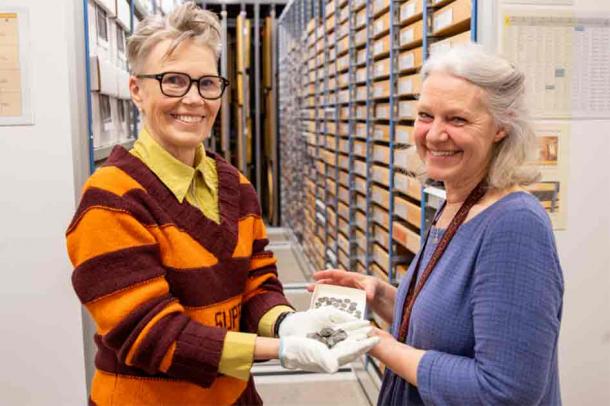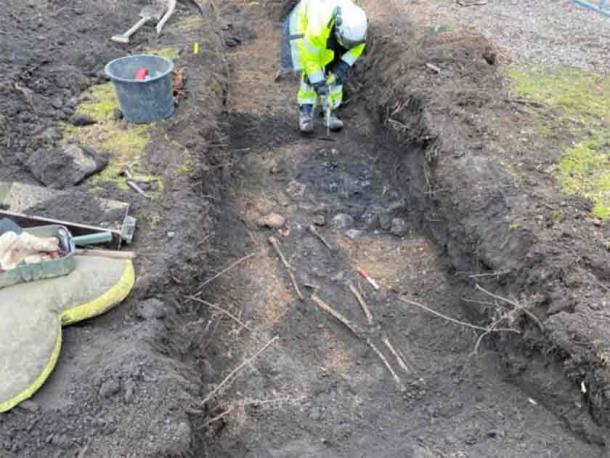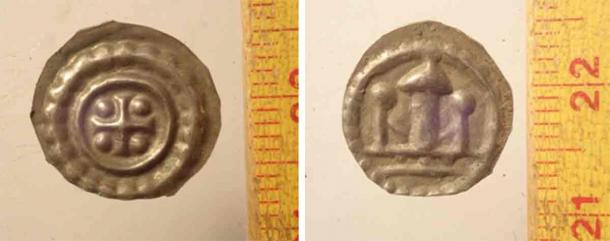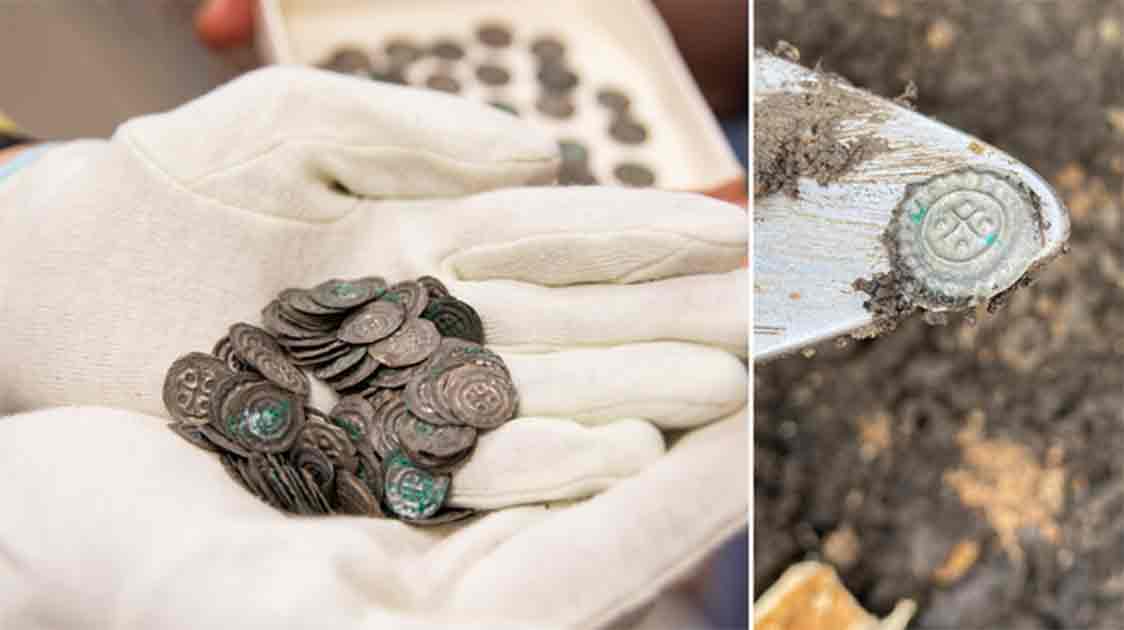Sensational Silver Discovery on Visingsö Alters Medieval Coin History
In an extraordinary archaeological find, at a medieval graveyard at Brahekyrkan on Visingsö island, Sweden, has yielded around 170 silver coins dating back to the mid-12th century, casting new light on the region's medieval history. This discovery, made during a geothermal installation project at the church, not only enriches our understanding of the period but also challenges existing notions of burial customs and coin circulation in medieval Götland.
- Blå Jungfrun Island, Sweden: Where Witches Dwell and Labyrinths Confuse
- Metals in Bronze Age Weapons Discovered in Sweden Came from Distant Lands
Unearthing History Beneath the Church
The team from Jönköping County Museum, led by archaeologists Anna Ödéen and Kristina Jansson, found the coins while monitoring the installation process. The initial excavation revealed two skeletons, and as the team cleared the area, the first few silver coins emerged near one of the skeleton's left feet.
Anna Ödéen, project manager described the moment of the find in a Jönköping County Museum statement:
“On the very first day, my colleague Kristina Jansson and I found two skeletons in the shaft where the wires were to be laid. We cleaned out the bones from the buried to get an idea of what the graves looked like. All of a sudden three silver coins appeared! We soon realized that many more were lying close to the buried person's left foot”
Further exploration led to the recovery of a total of around 170 silver bracteates, a type of coin minted on one side only. They were buried alongside a young man estimated to be between 20 and 25 years old. The coins, believed to be minted between 1150 and 1180 AD, include designs previously unknown to researchers.
- Norway’s “Gold Find of the Century” Uncovered, Including Rare Cache of Medallions
- Unearthing Ancient Magic in The Runes – Hidden Symbols & Powerful Numbers

Archaeologists Kristina Jansson and Anna Ödéen. (Åsa Rosén/Jönköping County Museum)
Ancient Activity at the Site
The excavation uncovered in total 24 graves and 20 hearths, along with the attention grabbing coin hoard. The existence of hearths at the site was already known from a survey in 2005, which dated three of them to 50–400 AD, showing that activity at the site dated back at least to the Roman Iron Age.
What struck the investigators as odd is that the 20 graves were located outside the church wall, on unconsecrated ground. Was this intentional or was there some other explanation? The researcher commented in a second press release:
“During parts of our history someone who committed suicide could not be given what the church called "an honorable burial" and the same was true for unbaptized children and serious criminals…However, it turned out that it was not just one grave, but many more. All lay in the same direction, well aligned with each other and at the same depth. It was therefore an organized burial site, where they should also have had a marking above ground.”

Kristina Jansson cleans out a prehistoric hearth that is right next to a grave.(Jönköping County Museum)
Of all the graves, only one was found to contain silver bracteates, which are only minted on one side. Only a handful of Gotland coins (minted on both sides) were found.
The inclusion of coins in Christian burials is an unusual practice for the time, as it typically aligns with earlier, pre-Christian customs. The reasons behind the young man's coin-laden burial remain a mystery, prompting further investigation into the life and status of the individual.
The archaeological team is particularly excited about piecing together the historical puzzle that these bracteates represent, potentially redefining our understanding of the region's history.
The collection of coins, including a handful of two-sided Gotland coins, is now undergoing detailed analysis by Kenneth Jonsson, a numismatics expert. This analysis involves careful recording, weighing, and photographing of each coin, some of which are fused together, making identification challenging.

Left, the most common motif on the bracteate in the collection: a cross with four points. Right; A bracteate type whose motif has not been seen before. (Jönköping County Museum)
Conservation and Continued Research
The next steps involve conserving and possibly separating the compressed coins, all while ensuring minimal damage. As this work progresses, the archaeological team continues to analyze the additional graves and hearths found at the site. The full implications of these discoveries will likely unfold over the coming months, promising new insights into Sweden's medieval past.
Top image: A handful of the medieval coin hoard found in Visingsö, Sweden Source: Jönköping County Museum
By Gary Manners
References
Ödeén, Anna, March2024. ‘Coin treasure at Brahekyrkan - sensational find on Visingsö.’ Jönköping County Museum. Available at: https://jonkopingslansmuseum.se/press/pressmeddelande/myntskatt_visingso/
Ödeén, Anna, April 2024. ‘What happens to the silver find from Visingsö?’ Jönköping County Museum. Available at: https://jonkopingslansmuseum.se/bloggportal/arkeologi/silverfyndet-fran-visingso/
















